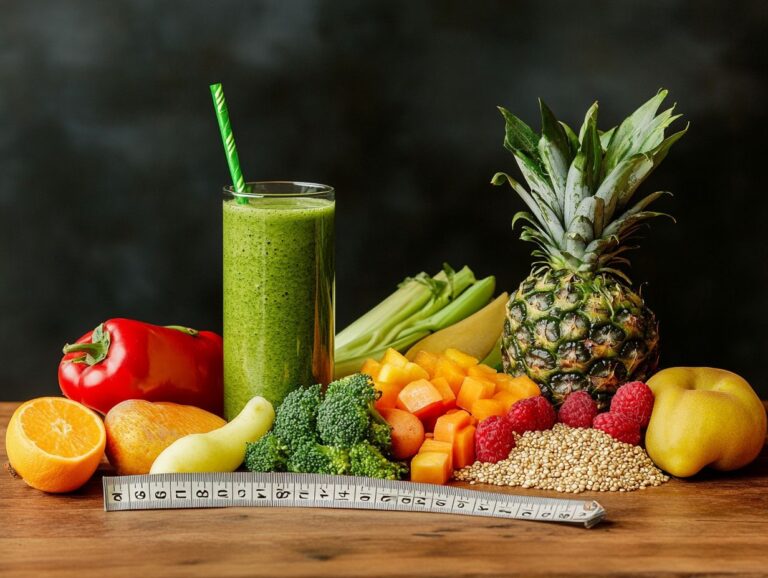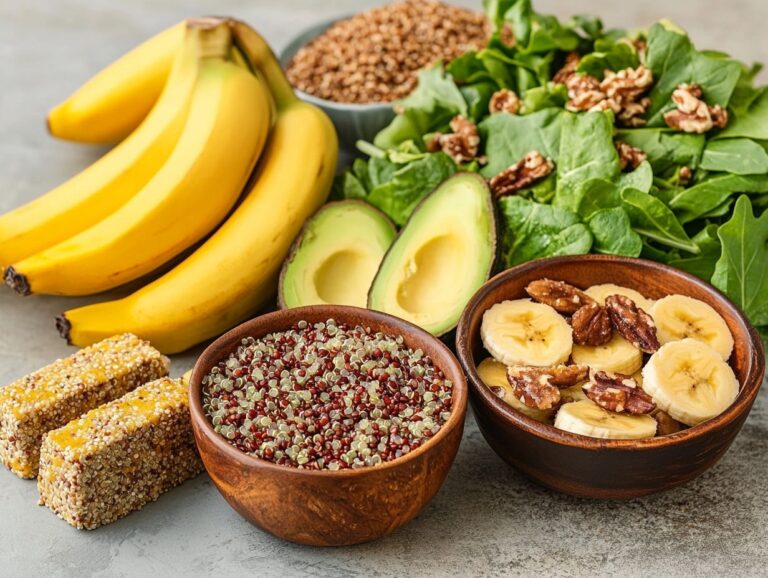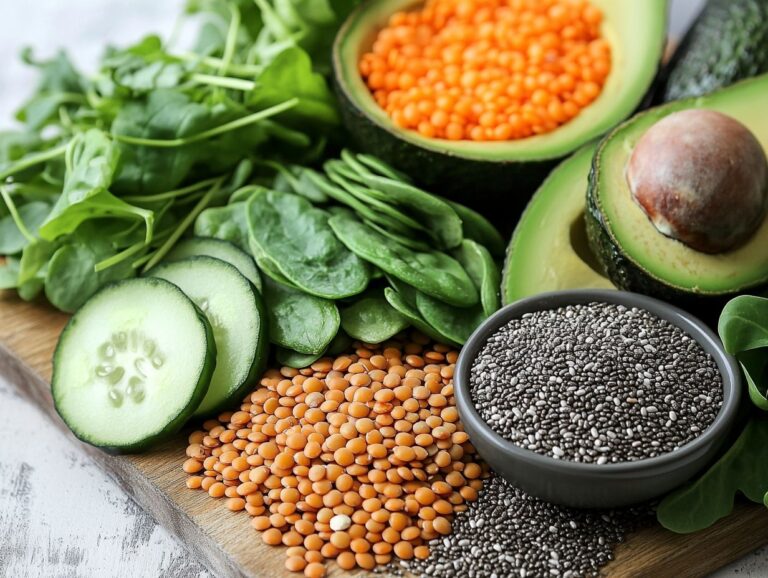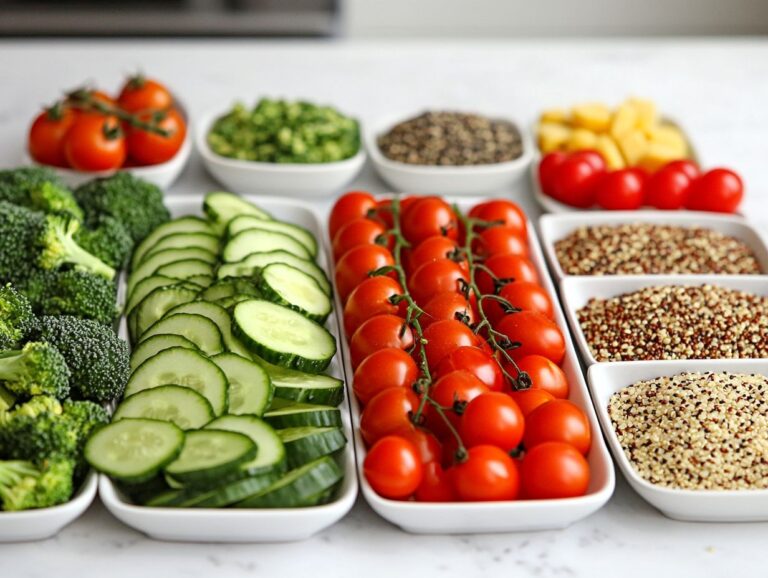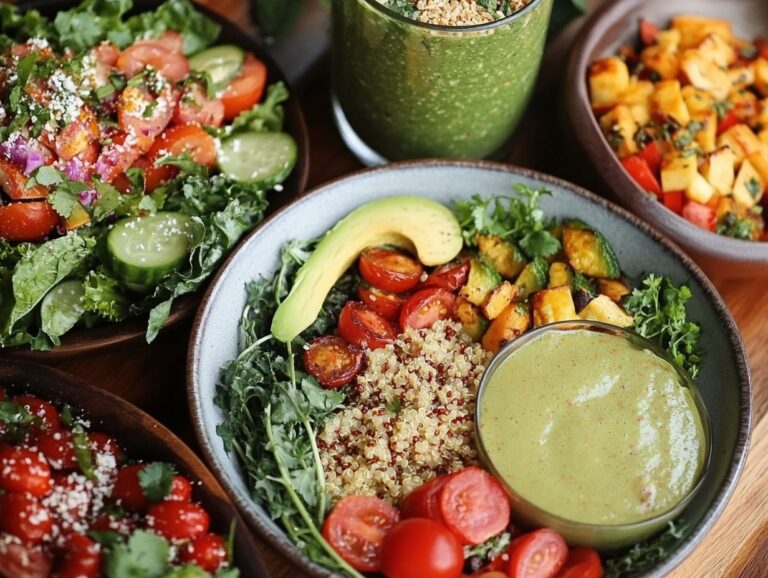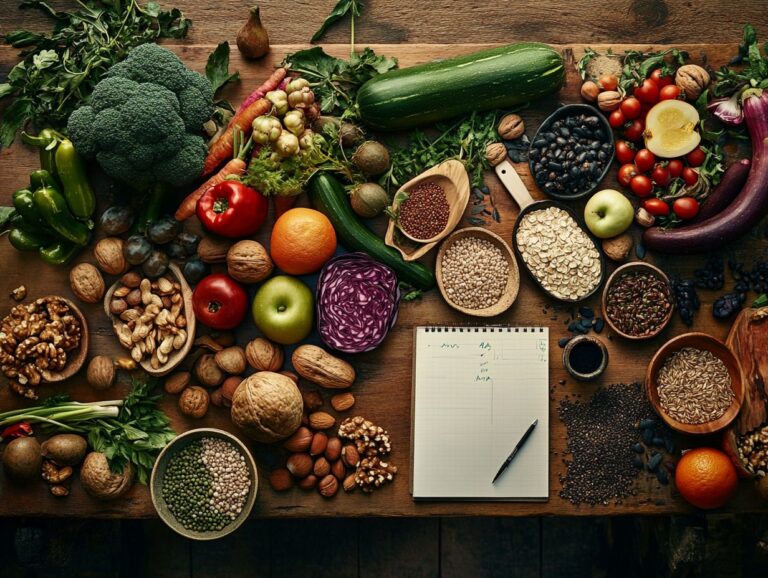The grain-free vegan diet has gained popularity among health-conscious individuals and environmentally minded eaters in recent years. This diet eliminates grains and legumes while emphasizing plant-based foods, which are associated with numerous health benefits and lower environmental impacts. If you are curious about what the grain-free vegan diet entails, its benefits, and how to adopt it, this article provides all the information you need. You will also find delicious options and tips for maintaining a balanced and fulfilling lifestyle without grains.
What Is a Grain-Free Vegan Diet?
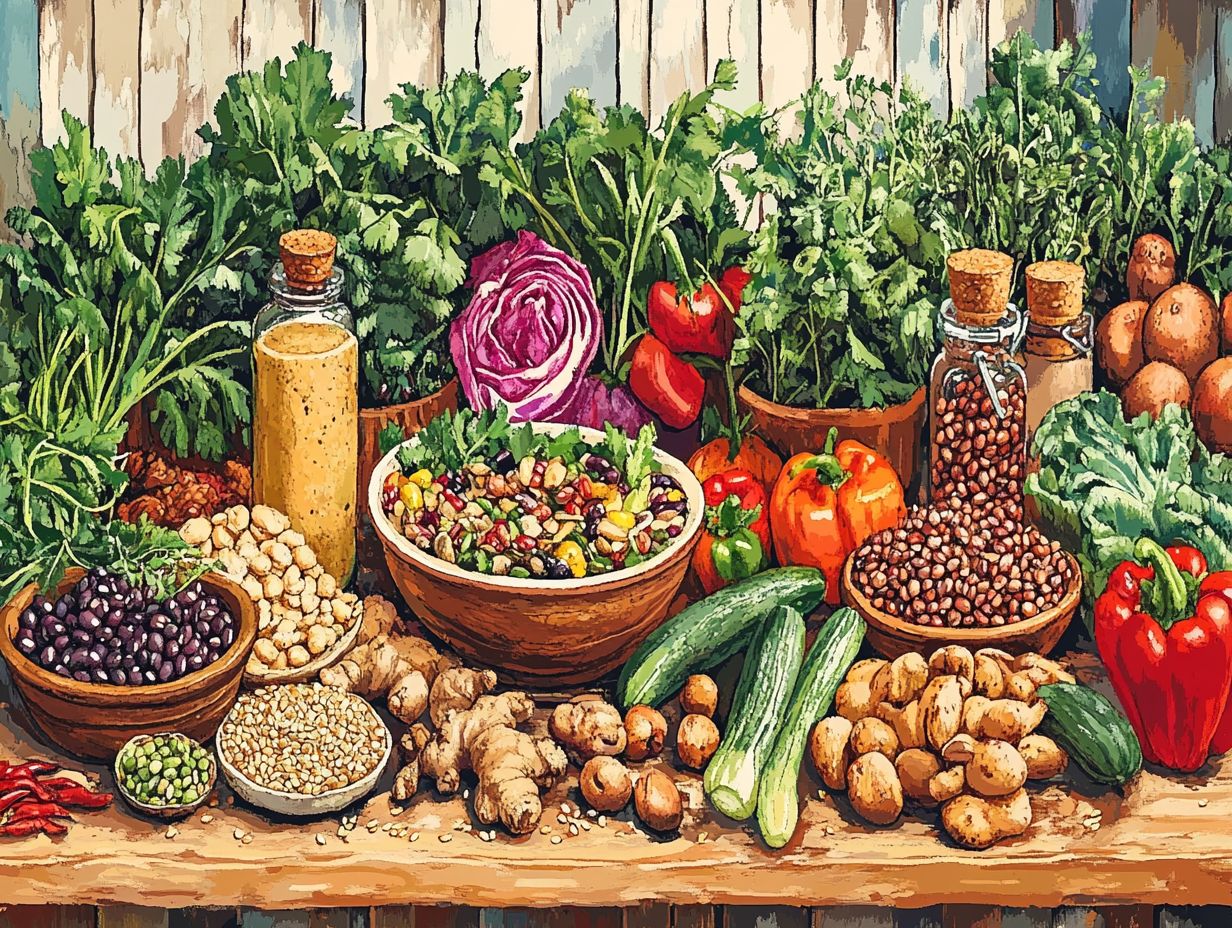
A grain-free vegan diet is a specialized dietary approach that excludes all grains while emphasizing a diverse selection of plant-based foods to ensure a varied and balanced nutritional intake.
By replacing traditional grain sources with an abundance of fruits, vegetables, starchy carbohydrates, fortified dairy alternatives, and plant-based proteins, individuals can maintain a healthy vegan diet that supports overall well-being, health benefits, and effective weight management.
This dietary choice highlights the importance of obtaining essential nutrients such as omega-3 fatty acids, vitamin D, and vitamin B12, while also considering sustainable practices and personal health.
Why Choose a Grain-Free Vegan Diet?
A grain-free vegan diet offers several benefits, including enhanced health outcomes and a reduced environmental impact.
This combination makes it an attractive choice for individuals seeking a healthier lifestyle and ethical eating practices.
1. Health Benefits
A grain-free vegan diet offers several health benefits, including enhanced digestive health, improved energy levels, and the ability to meet nutritional requirements through a diverse range of plant-based foods.
This diet emphasizes the consumption of fruits, vegetables, legumes, and nuts, which are excellent sources of vitamins and minerals.
Plant-based protein sources, such as lentils and chickpeas, support weight loss and effective weight management.
Since grains are linked to higher levels of inflammation, adopting a vegan and grain-free lifestyle may reduce the risk of developing autoimmune diseases.
Individuals following this lifestyle frequently report feeling more energized and rejuvenated.
2. Environmental Benefits
A grain-free vegan diet not only enhances individual health but also contributes significantly to environmental sustainability. By reducing dependency on grain production and promoting plant-based foods with a lower ecological footprint, this dietary approach supports sustainable practices that lead to a substantial decrease in greenhouse gas emissions associated with traditional agriculture, including methane, nitrous oxide, and carbon dioxide.
Furthermore, by lowering the demand for grains, individuals help conserve essential resources such as water and arable land, which are often depleted by conventional farming practices. Choosing foods that prioritize sustainability can also enhance biodiversity and foster healthy local ecosystems.
As consumers adopt this dietary shift, they promote farming practices that are not only better for their health but also gentler on our planet.
How to Transition to a Grain-Free Vegan Diet
Transitioning to a grain-free vegan diet involves educating oneself about nutritional requirements, exploring a variety of meal options, and incorporating diverse plant-based proteins to ensure that essential nutritional needs are met.
1. Educate Yourself on Nutritional Needs
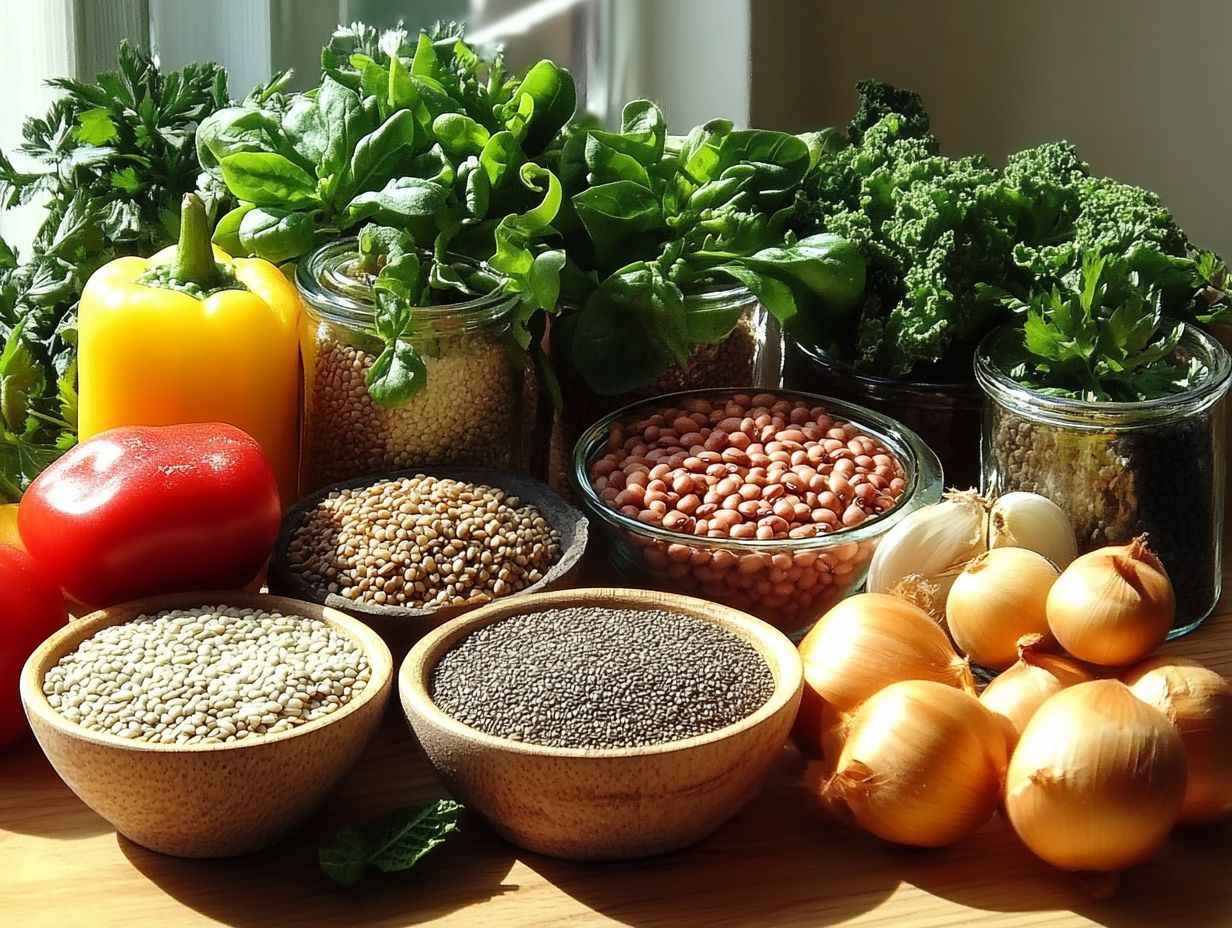
Understanding your nutritional needs is essential when transitioning to a grain-free vegan diet, as this helps ensure adequate intake of important nutrients such as vitamin B12, omega-3 fatty acids, calcium, and iron.
The challenge of making this transition often lies in balancing all necessary food groups to maintain optimal health, which is why nutritional education is so important.
Healthcare professionals can provide personalized recommendations to help individuals identify potential deficiencies or necessary modifications in their diet.
Resources like the Eatwell Guide can assist individuals in developing a comprehensive dietary plan that includes a variety of protein sources and essential vitamins.
Incorporating these key nutrients, along with fortified foods or supplements, can support overall health in the new diet.
2. Stock Up on Plant-Based Proteins
A grain-free vegan diet should encompass a diverse range of plant-based proteins to ensure that all essential amino acids are included, meeting the body’s dietary requirements for optimal health.
Beans, lentils, and chickpeas serve as excellent sources of plant-based protein, along with other vital nutrients. These foods can be easily incorporated into salads, soups, and stews, or enjoyed as main dishes.
Nuts and seeds, such as almonds, chia seeds, and hemp seeds, are also rich in plant-based protein and can enhance the flavor and texture of smoothies and oatmeal when used as toppings.
For nutritious snacking, consider:
- Chickpea snacks
- Roasted pumpkin seeds
Both of which are high in plant-based protein. Additionally, for those who enjoy cooking, plant-based protein powders can be added to smoothies or baked goods, providing another excellent source of protein in the diet.
3. Experiment with Grain-Free Alternatives
Experimenting with grain-free alternatives makes the transition to a grain-free vegan diet both enjoyable and fulfilling, allowing for a variety of meals and creativity in plant-based cooking.
Popular grain-free options such as almond flour, coconut flour, and chickpea flour can be utilized to create a wide range of dishes, catering to dietary restrictions while enhancing everyday meals.
- Almond flour serves as an excellent base for fluffy pancakes.
- Chickpea flour can be used to make savory flatbreads or filling, protein-rich snacks.
Incorporating these alternatives into salads, smoothies, or baked goods can significantly improve nutrition without sacrificing flavor.
Readers are encouraged to get creative and try making dishes like grain-free pizza crusts or nutrient-dense energy bars, making their culinary transition both exciting and health-focused.
What Foods to Avoid on a Grain-Free Vegan Diet
A grain-free vegan diet eliminates all grains, legumes, and processed foods. The exclusion of these items is intended to maintain the integrity of the diet and support the achievement of desired health outcomes.
1. Grains
In a grain-free vegan diet, staples such as wheat, rice, oats, and corn are excluded because they are commonly found in traditional diets. The primary reason for their exclusion is that these grains can trigger allergic reactions in individuals who are sensitive to them, leading to digestive discomfort and upset stomachs.
Additionally, the high carbohydrate content of these staple foods can result in spikes in blood sugar levels, making it challenging for those seeking to maintain consistent energy levels.
Instead, individuals following a grain-free vegan diet often opt for a range of nutrient-rich alternatives, such as legumes, seeds, and nuts, which provide essential proteins and healthy fats without the drawbacks associated with traditional grains.
2. Legumes
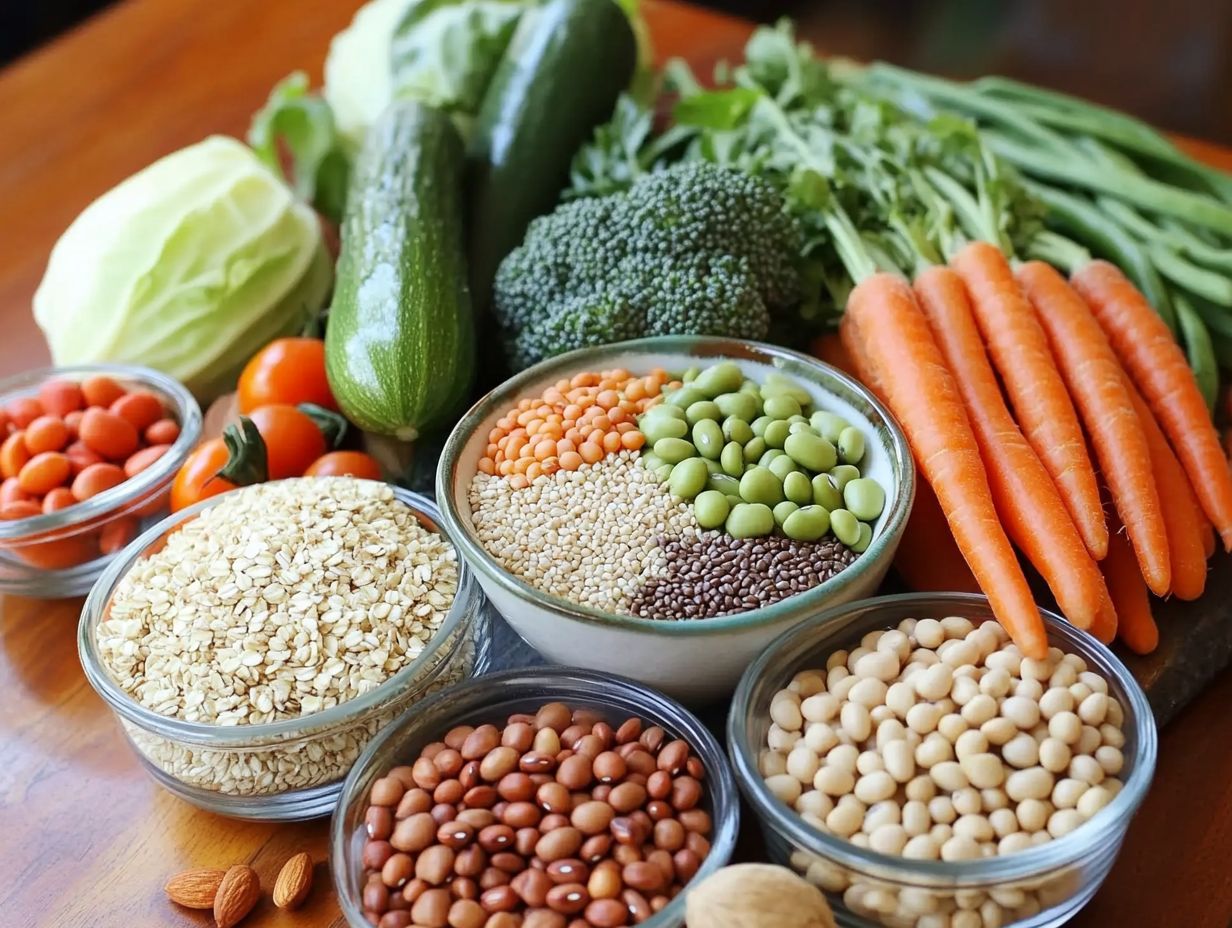
Legumes, including beans, lentils, and peas, are often excluded from a grain-free vegan diet despite their high nutritional value because they contain carbohydrates. This dietary approach emphasizes low carbohydrate intake due to its benefits for weight management and blood sugar control.
While legumes are an excellent source of protein, fiber, and micronutrients, their carbohydrate content can be a concern for many individuals. Additionally, the complex fibers and antinutrients found in legumes may lead to digestive issues, with some people experiencing gas and bloating after their consumption.
As a result, those following a grain-free vegan diet may choose to avoid legumes and opt for alternative protein sources such as:
- Nuts
- Seeds
- Specific vegetables
These alternatives provide similar nutritional benefits without the associated digestive discomfort.
3. Processed Foods
Processed foods are discouraged on a grain-free vegan diet because they are often of poor quality, lacking nutritional value, and can be detrimental to health goals.
Additionally, processed foods typically contain high levels of added sugars, unhealthy fats, and preservatives. Over time, the consumption of these foods can lead to nutrient deficiencies that prevent individuals from meeting their dietary requirements.
In contrast, whole, unprocessed ingredients provide the essential vitamins and minerals needed for optimal health, while also allowing for a greater variety of meals that are both nutritious and satisfying. The inclusion of fresh fruits, vegetables, nuts, and legumes introduces flavorful options that promote overall well-being, highlighting the significant impact that proper food choices can have on a grain-free vegan diet.
What Foods to Include on a Grain-Free Vegan Diet
A grain-free vegan diet encourages the consumption of a wide variety of nutrient-rich foods, such as fruits, vegetables, nuts, and seeds.
This approach ensures that all dietary needs are fulfilled through a diverse and balanced diet.
1. Fruits and Vegetables
Fruits and vegetables are essential components of grain-free vegan diets, as they are rich in vitamins, minerals, and antioxidants that support overall health. Incorporating a wide variety of these foods can significantly enhance nutritional intake and help the body fend off diseases while maintaining optimal functioning. Additionally, ensuring your diet includes vitamin D and vitamin B12 is crucial for comprehensive health benefits.
Brightly colored fruits, such as berries, oranges, and apples, are high in vitamin C and antioxidants, while leafy green vegetables like spinach, kale, and Swiss chard provide excellent sources of iron and calcium, which are crucial for healthy bones. This diversity not only supports immune health but also aids digestion and boosts energy levels.
By including seasonal produce and experimenting with different cooking methods, individuals can enjoy a range of flavors while reaping the numerous health benefits associated with these natural food sources. Meal variety is key in a plant-based diet, ensuring a balance of nutrients and flavors.
2. Nuts and Seeds
Nuts and seeds are excellent sources of healthy fats and plant-based protein in a grain-free vegan diet, contributing to satiety and nutritional balance. Though small, they pack a powerful punch and come in various types, each offering unique health benefits. They are also a critical part of a gluten-free diet, providing essential nutrients like iodine and selenium.
- For instance, almonds are rich in vitamin E, which is essential for skin health.
- Walnuts are one of the richest sources of omega-3 fatty acids, promoting heart health and reducing inflammation.
- Chia seeds and flaxseeds are outstanding sources of fiber, which is important for digestion, and they also contain beneficial antioxidants.
- Additionally, they provide magnesium and selenium, both of which are crucial for immune function and bone health.
Incorporating a variety of nuts and seeds into your diet not only offers a wide range of nutrients but also helps satisfy cravings.
3. Plant-Based Protein Sources
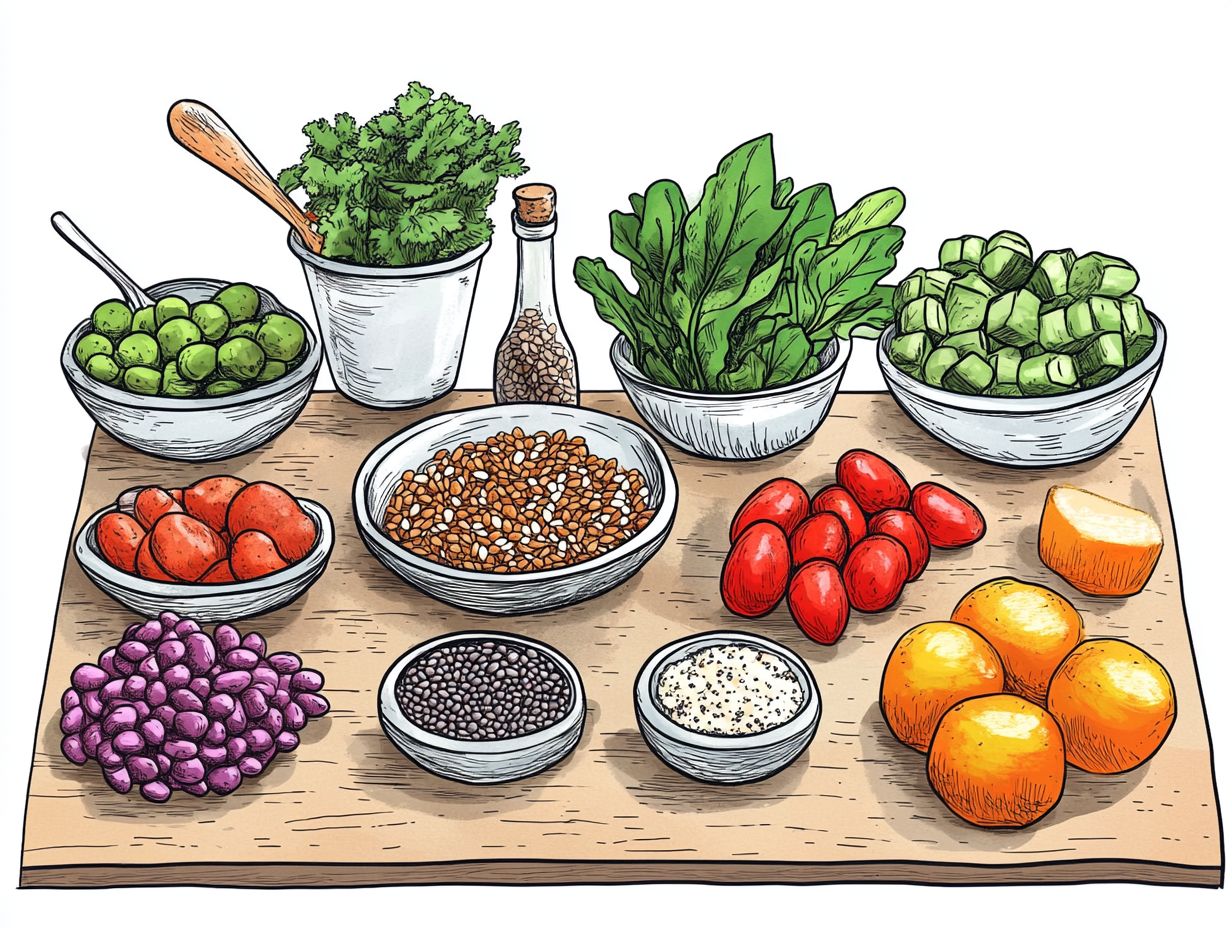
Including a variety of plant-based protein sources is essential for maintaining a grain-free vegan diet, as it ensures that the body’s nutritional needs are met and promotes a healthy protein intake. A diet rich in vegetable sources supports the body’s demands and can align with the principles of the Mediterranean diet.
Individuals transitioning from a traditional diet that includes animal products can obtain adequate nutrition through high-protein options such as lentils, chickpeas, and black beans. These legumes can be easily incorporated into salads, soups, or stews.
Additionally, incorporating tofu or tempeh offers a versatile option, as they can be sautéed, grilled, or added to stir-fries, while providing a complete amino acid profile.
Nuts and seeds, such as chia and hemp seeds, can further enhance the protein content of smoothies and oatmeal, contributing to a diverse range of textures and flavors in every meal.
Tips for Maintaining a Healthy Grain-Free Vegan Diet
Grain-free vegan diets require careful planning, effective meal preparation methods, and sufficient hydration to promote overall health and wellness.
1. Plan Ahead and Meal Prep
Meal planning and preparation are essential for successfully following a grain-free vegan diet, as they ensure that healthy meals are readily available. By planning and preparing meals in advance, individuals can reduce the likelihood of resorting to quick, unhealthy options when hunger strikes.
Many people find they have more time and energy on weekends to prepare nutritious meals for the upcoming week. Having healthy meals already prepared alleviates the stress of making last-minute food choices and saves time during busy weekdays.
To create healthy grain-free meals, a variety of vegetables, legumes, nuts, and seeds can serve as the primary ingredients. Adding flavorful herbs and spices can enhance the taste and enjoyment of these dishes.
Batch-cooking vegetarian options such as hearty vegetable stews or stir-fries can provide satisfying and nutritious meals throughout the week, supporting individuals in maintaining a balanced and health-conscious lifestyle.
2. Listen to Your Body
Listening to your body is essential for maintaining a grain-free vegan diet, as it enables individuals to accurately assess their health, energy levels, and dietary needs.
By paying attention to hunger cues and changes in mood or overall well-being, people can make informed choices that align with their personal health goals. This heightened awareness can help identify nutrient deficiencies or intolerances, which can then be addressed by adjusting meals as needed.
Choosing a diverse range of plant-based foods that are high in protein, healthy fats, and vitamins is crucial for ensuring a balanced diet and enhancing overall well-being.
Additionally, being mindful of physical sensations after meals allows individuals to discover which food options nourish their bodies without causing discomfort, a critical aspect of dietary awareness. Consulting a health care professional can also provide guidance to ensure a healthy weight is maintained while adhering to a grain-free diet.
3. Stay Hydrated
The significance of hydration in a grain-free vegan diet is akin to its importance in any dietary regimen. Adequate hydration is essential for optimal health and plays a crucial role in digestion, particularly on a grain-free diet.
Insufficient fluid intake can lead to fatigue, headaches, and digestive issues, which may hinder individuals from fully benefiting from their dietary choices. To maintain proper hydration, individuals should establish a daily water intake goal and adhere to it. Following guidelines such as those from the Eatwell Guide can be beneficial in maintaining overall health with sufficient hydration.
Those following a grain-free vegan diet should aim to drink approximately 2 to 3 liters of water per day, adjusting based on their activity levels and climate. Enhancing hydration can be made more enjoyable by incorporating other hydrating beverages, such as: Herbal teas, Homemade infused waters, and Coconut water. Resources like Fresh is Real and Harvard Health Publishing offer additional insights into effective hydration strategies for a vegetarian diet.
- Herbal teas
- Homemade infused waters
- Coconut water
Additionally, consuming water-rich fruits and vegetables, like cucumbers and oranges, can contribute to overall fluid intake.
In summary, being mindful of adequate water consumption is vital for energy and overall health, especially for those adhering to a grain-free, plant-based diet.
